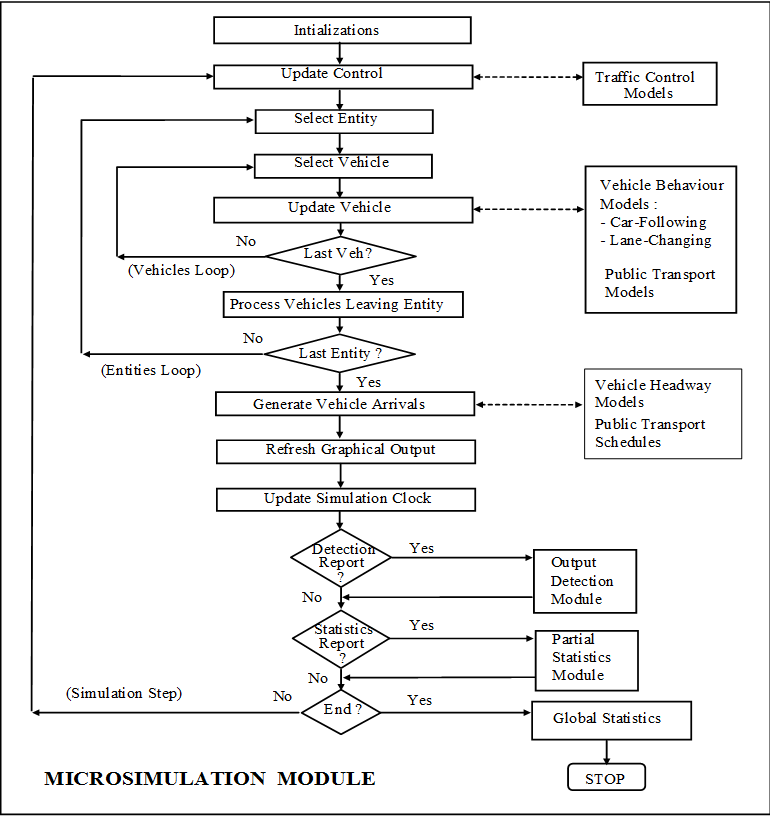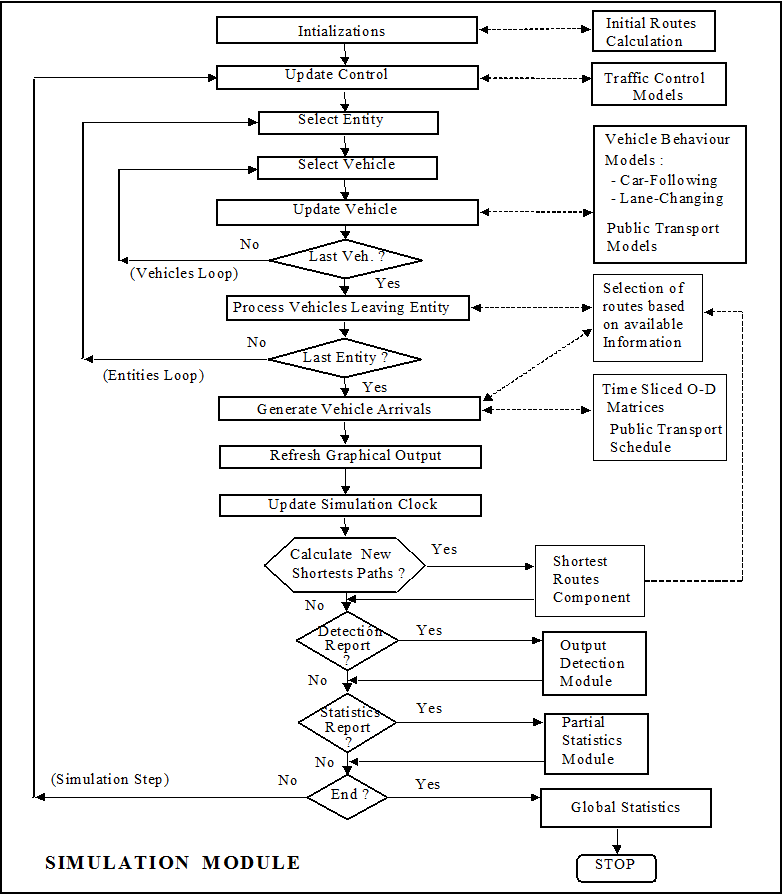Microsimulation Process¶
The logic of the simulation process in Aimsun Next is illustrated in the figure below for Traffic States and in the next figure for OD matrices Demand. It can be considered as a hybrid simulation process, combining an event scheduling approach with activity scanning. At each time interval (simulation step), the simulation cycle updates the unconditional events scheduling list (i.e. events such as traffic light changes which do not depend on the termination of other activities). The “Update Control” box in the flow chart represents this step. After this updating process, a set of nested loops starts to loop over the entities (road sections and junctions at a lane level) and update each vehicle in the model. Once the last entity has been updated, the simulator performs the remaining operations such as entering new vehicles, collecting new data, etc.

New vehicles are input into the network according to flow generation procedures (headway distributions for example) using one of these two options: with input sections and turn percentages (traffic states) or using time sliced OD matrices and route selection.

In the OD matrices demand (route-based case) the simulation process includes an initial computation of routes going from every section to every destination according to link cost criteria specified by the user. A shortest route component periodically calculates the new shortest routes according to the current time interval travel times provided by the simulator, and a route selection model assigns the new vehicles to these. Vehicles keep their assigned route from origin to destination unless they have been identified as able to update their path en route, or at some point have missed a turn, or at some point have been diverted by a traffic management action.
The process of moving vehicles in a microsimulation model is described in the following sections.